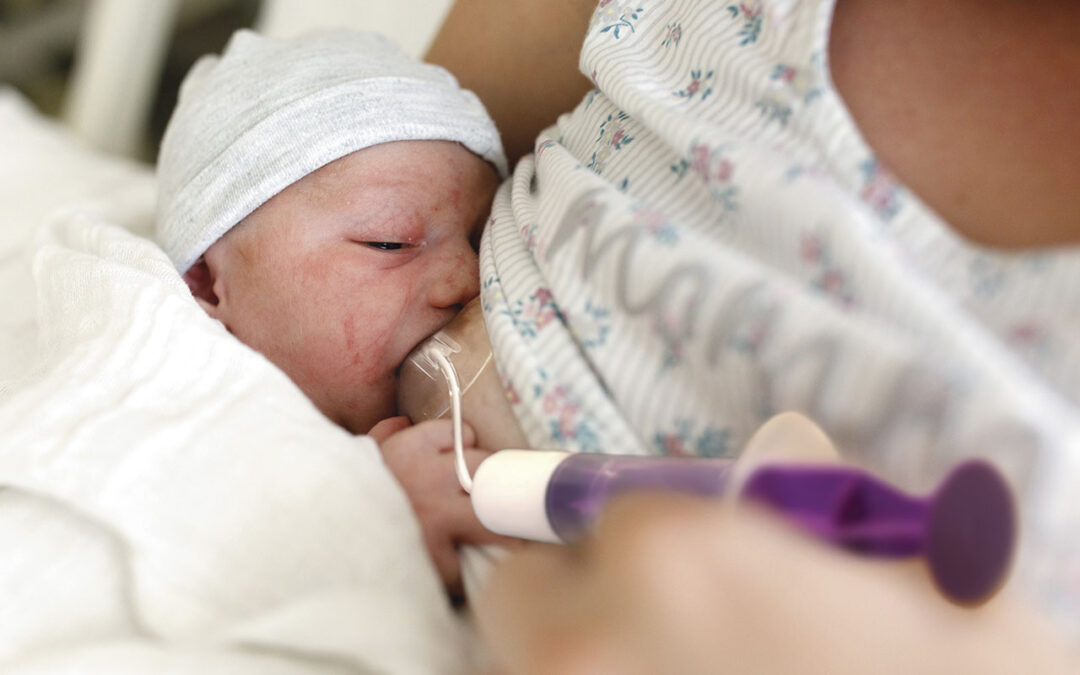More than a Supplemental Nursing System (SNS)
A supplemental nursing system (SNS) is a feeding device that allows a baby to receive supplemental nutrition. It can be used to deliver expressed breast milk or formula, while nursing at the breast. It’s primarily used when a baby needs additional nutrition beyond what the mother’s breast milk supply provides. It can also be used to stimulate milk production, assist with adopted babies, or help babies with latching difficulties.
A traditional SNS includes a bottle or bag to hold the supplemental milk. A thin, flimsy feeding tube runs from the container along the mother’s chest and is taped to the nipple or fished through a standard nipple shield.
The Bridge is the first breastfeeding assistance system that provides a latching surface as part of the device. It has been described as a “nipple shield that has an SNS attached to it.” It consists of a silicone nipple cover with a built-in channel system that attaches to a syringe. The cover has one large center hole and five smaller outer holes that mimic the breast.
Feeding
With the SNS, the milk is gravity fed. Since liquids take the path of least resistance, gravity feeding maximizes flow from the container instead of the breast. This can lead to “flow preference,” and the baby may become frustrated when the flow is slower from the nipple alone. Making it more challenging to transition to breastfeeding without supplement.
The Bridge utilizes a syringe in place of a bottle or bag. This allows full control over the amount, flow rate, and timing of supplementation. With this control, the baby can be encouraged to work at the breast, maximizing output from the breast and further stimulating the milk supply. The Bridge only allows baby to pull the exact amount that you push through the syringe.
After all, the goal is to have the baby feed from the breast as much as possible and only use supplement when needed.
Use Cases
The Neotech Bridge can be used in most circumstances in which a bottle would traditionally be used, including:
- Low milk supply
- Adopted babies
- Premature babies
- Babies with latching or sucking difficulties
- To assist in relactation
